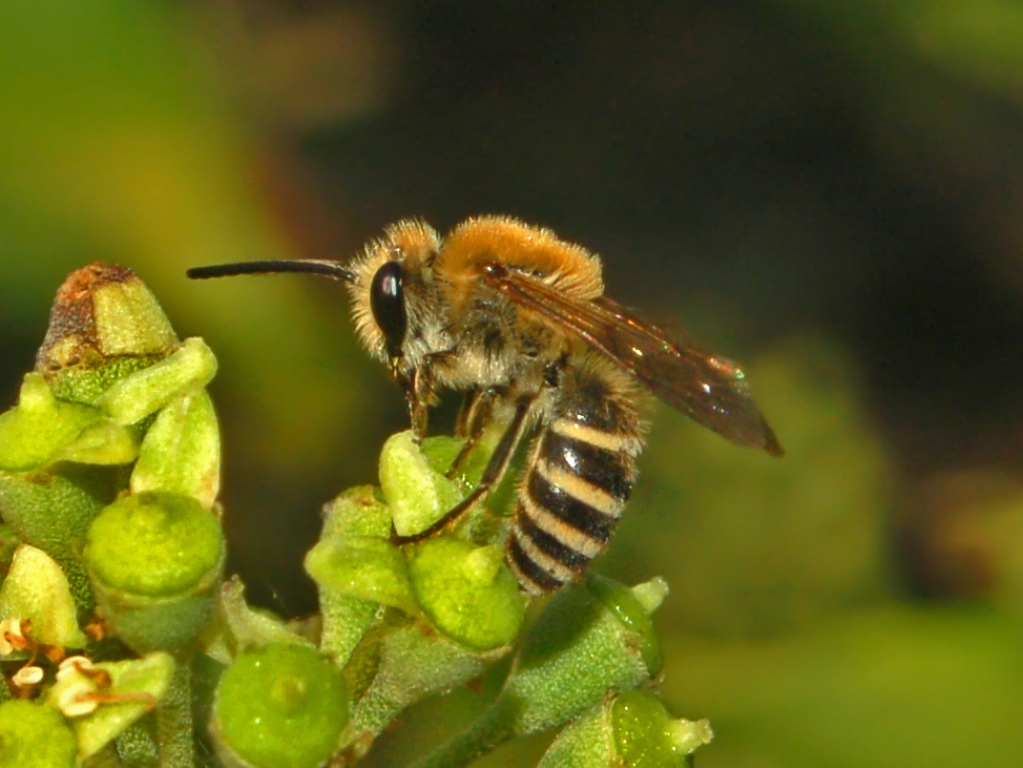National Pollinator Week Day 2: Think Big! Plant Trees, Shrubs, Vines, And Canes For Pollinators.

Colletes bee. Photo: Wikimedia commons
Woody plants are just as important to pollinators as wildflowers, especially in the spring when newly emerged insects need a lot of energy to fuel their busy lives. Spring-blooming trees with floral resources for pollinators include the ever-popular pussy willow and other willows (Salix species), serviceberry or Juneberry (Amelanchier species) that will later bear fruits relished by birds, and the strikingly ornamental redbud (Cercis canadensis). Native fruit trees, such as American plum and wild cherry, as well as apple, pear, and peach trees in our orchards that need pollinators to set fruit are also vital sources of pollen and nectar in the spring.
Blueberries, raspberries, blackberries, and black chokeberries are other fruit-bearing woody perennials that nourish pollinators beginning in the spring and into the summer. Even the small flowers of wind-pollinated trees such as oaks and maples are visited by bees for nectar and pollen. And some of our most ornamental native shrubs and trees, including dogwoods, viburnums, ninebark, and winterberry holly, are also high-value pollinator plants. sweet pepperbush (Clethra alnifolia), Virginia rose (Rosa virginiana) and others with open flower forms, buttonbush (Cephalanthus occidentalis), and our native panicle hydrangea (Hydrangea paniculata) are also great for attracting pollinators
In addition to their value to bees and other pollinators, native woody perennials are indispensable as host plants for butterflies and moths. Shrubs and trees bred for purple leaves may be visually appealing to us, but the chemicals that give them their color are often inedible to caterpillars so it’s preferable to select green-leaved varieties of these shrubs and trees.
Deciduous trees planted to the southwest and southeast of dwellings and other buildings as well as those that shade pavement in the hot summer months will become increasingly vital in the decades to come. Research has confirmed that planting trees are one of the best investments we can make to enhance the resale value of our properties. Establishing trees and shrubs that offer wildlife habitat in our neighborhoods and communities also enhances our quality of life by providing intimate encounters with nature, beautifying our surroundings, and uplifting our spirits.

2 thoughts on “National Pollinator Week Day 2: Think Big! Plant Trees, Shrubs, Vines, And Canes For Pollinators.”